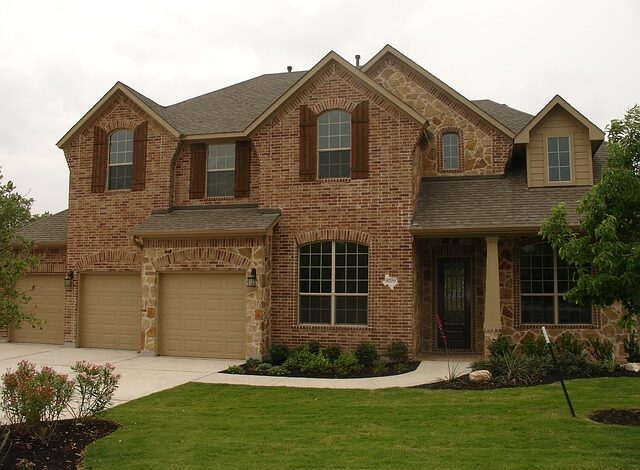Homeowners Insurance for High-Risk Areas in Singapore: What You Need to Know

Introduction: Protecting Your Home in High-Risk Zones
Owning a home is one of the most significant investments you’ll make in your lifetime. However, if your property is located in a high-risk area—whether due to natural disasters, crime rates, or environmental factors—securing adequate homeowners insurance can be both challenging and expensive. In Singapore, where urbanization and climate change have introduced new risks such as flash floods, rising sea levels, and even structural vulnerabilities, understanding how to navigate the complexities of homeowners insurance is essential.
This guide explores the intricacies of homeowners insurance for high-risk areas in Singapore, including coverage options, cost considerations, risk mitigation strategies, and tips for finding affordable policies despite elevated premiums.
What Makes an Area “High-Risk”?
Insurance companies classify certain geographic regions as “high-risk” based on various factors that increase the likelihood of damage or loss. Common characteristics of high-risk areas in Singapore include:
- Natural Disasters:
- Flash Floods: Low-lying areas like parts of Orchard Road, Bishan, and East Coast are prone to flooding during heavy rains.
- Rising Sea Levels: Coastal properties face long-term risks from climate change-induced sea-level rise.
- Earthquakes and Subsidence: While rare, seismic activity in neighboring regions (e.g., Indonesia) can impact buildings, especially older ones with structural weaknesses.
- Urban Hazards:
- Fire Risks: High-density housing estates or older buildings may be more susceptible to fire outbreaks.
- Crime Rates: Neighborhoods with higher incidences of theft, vandalism, or break-ins may see increased premiums.
- Environmental Concerns:
- Land Reclamation: Properties built on reclaimed land may face settlement issues over time.
- Air Pollution: Industrial zones or areas near construction sites may experience higher pollution levels, affecting property value and health risks.
Understanding whether your home falls into a high-risk category is crucial for assessing insurance needs and costs.
Types of Coverage for High-Risk Homes
While standard homeowners insurance typically covers perils like fire, theft, and wind damage, high-risk areas often require specialized policies or endorsements to address specific threats. Below are the most common types of coverage available:
1. Flood Insurance
- Why It Matters: Standard homeowners policies exclude flood damage caused by natural events like heavy rainfall or storm surges. With Singapore experiencing record-breaking floods in recent years, this coverage has become critical.
- Availability: Some insurers now offer standalone flood insurance or add-ons to existing policies, though premiums can be steep for properties in flood-prone areas.
- Cost Considerations: Premiums vary widely depending on proximity to water bodies, elevation, and historical flood data.
2. Fire and Special Perils Insurance
- Why It Matters: Fire remains a leading cause of property damage in Singapore. This policy extends beyond basic fire coverage to include perils like explosions, riots, strikes, and malicious damage.
- High-Risk Considerations: Older buildings or those without modern fire safety systems (e.g., sprinklers) may face higher premiums.
3. Earthquake and Structural Damage Insurance
- Why It Matters: While earthquakes are infrequent in Singapore, tremors from regional quakes can still cause cracks or structural failures, particularly in aging buildings.
- Mitigation Discounts: Insurers may offer reduced rates if homeowners implement earthquake-resistant retrofitting measures.
4. Theft and Burglary Coverage
- Why It Matters: High-crime neighborhoods necessitate robust coverage against theft, vandalism, and malicious damage.
- Additional Features: Some policies include identity theft protection or coverage for stolen valuables stored off-premises.
5. Contents Insurance
- Why It Matters: Covers personal belongings inside the home, which may be damaged or stolen during floods, fires, or break-ins.
- High-Risk Considerations: Valuable items like jewelry, electronics, or art collections may require additional riders.
Factors That Influence Insurance Costs in High-Risk Areas
Several variables determine how much homeowners in high-risk areas pay for insurance:
- Location: Properties in floodplains, low-lying areas, or older neighborhoods face significantly higher premiums.
- Construction Materials: Homes built with fire-resistant materials (e.g., concrete) or equipped with storm shutters may qualify for discounts.
- Proximity to Emergency Services: Access to fire stations, hospitals, and police departments can lower costs.
- Historical Claims Data: If your neighborhood has a history of frequent claims related to specific perils, expect higher rates.
- Deductibles and Limits: Choosing higher deductibles or lower coverage limits can reduce premiums but increases out-of-pocket expenses during a claim.
Strategies for Reducing Insurance Costs
While living in a high-risk area inevitably raises insurance costs, there are ways to minimize expenses without compromising coverage:
- Risk Mitigation Measures:
- Install sump pumps and backwater valves to prevent flood damage.
- Use fire-resistant building materials and ensure smoke detectors and fire extinguishers are functional.
- Reinforce windows and doors to deter burglars.
- Bundling Policies: Combining homeowners insurance with auto or other personal lines policies from the same provider can yield significant discounts.
- Shop Around: Compare quotes from multiple insurers, including smaller regional companies that might offer competitive rates.
- Increase Deductibles: Opting for a higher deductible lowers monthly premiums but requires setting aside savings for emergencies.
- Leverage Government Programs: Some government initiatives provide subsidies or incentives for implementing flood defenses or eco-friendly practices.
- Maintain Good Credit: While credit scores don’t directly affect premiums in Singapore, maintaining a strong financial profile ensures you can afford comprehensive coverage.
Common Misconceptions About Homeowners Insurance in High-Risk Areas
Misinformation can complicate efforts to secure appropriate coverage. Let’s clarify some common myths:
- Myth #1: All Perils Are Covered Under Standard Policies
- Reality: Standard policies exclude perils like floods, earthquakes, and subsidence unless explicitly added via endorsements.
- Myth #2: Living in a High-Risk Area Means Unaffordable Insurance
- Reality: While premiums are higher, implementing risk-reduction measures and shopping strategically can make coverage manageable.
- Myth #3: Government Assistance Will Cover Disaster Losses
- Reality: Government aid programs often provide minimal support and come with strict eligibility requirements. Private insurance remains the primary safeguard.
- Myth #4: Older Homes Are Automatically More Expensive to Insure
- Reality: Age alone isn’t a determining factor; structural integrity, updates, and safety features matter more.
Final Thoughts: Preparing for Peace of Mind
Living in a high-risk area doesn’t mean sacrificing financial security or peace of mind. By understanding the unique challenges posed by your location and taking proactive steps to mitigate risks, you can find a homeowners insurance policy that balances affordability with comprehensive protection.
Remember, investing in the right insurance isn’t just about safeguarding your property—it’s about ensuring your family’s future remains stable, no matter what challenges arise. Whether you’re reinforcing your home against floods, installing fire alarms, or exploring tailored endorsements, every effort counts toward resilience.
If you’re ready to review your current policy or shop for new coverage, consult with an experienced broker who understands the nuances of insuring high-risk properties. Together, you can create a strategy that keeps your home—and your finances—secure.



